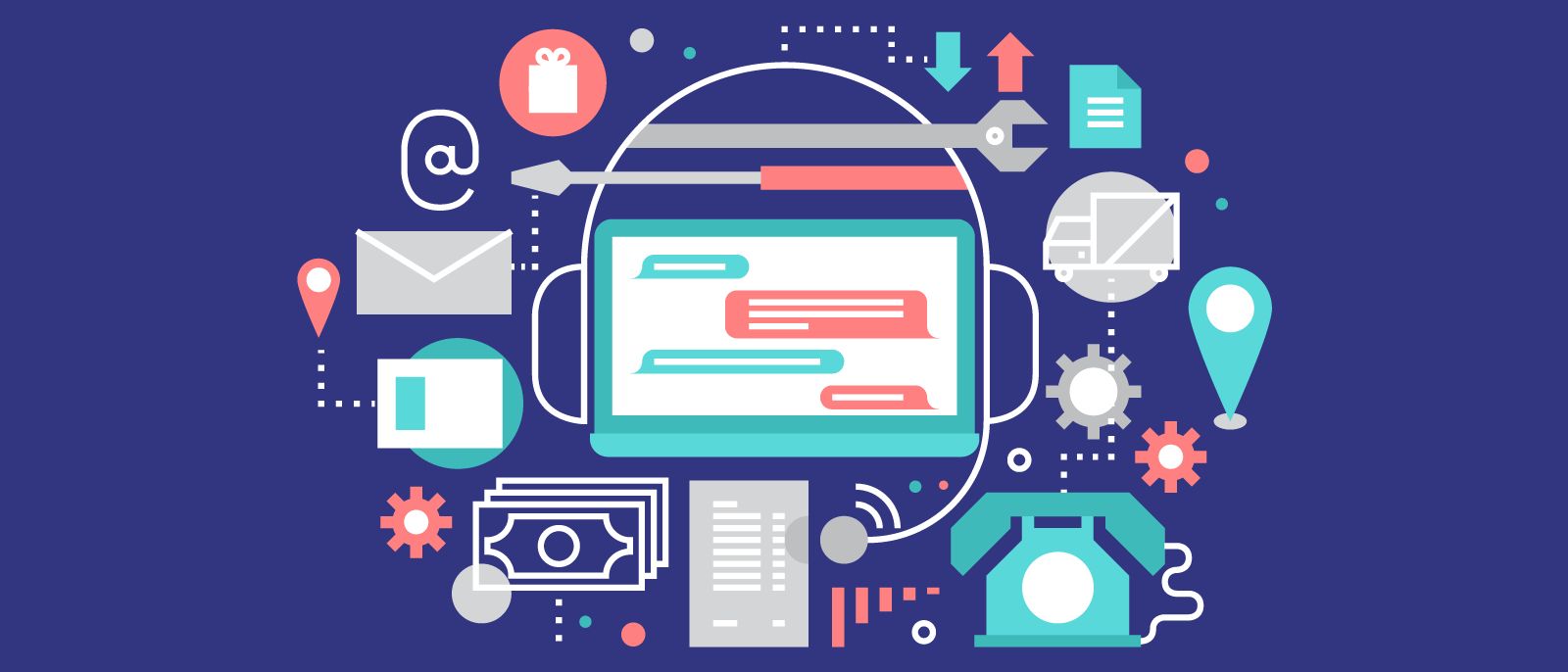
Making customers for keeps: How to win with retention marketing
Lucid Content
Reading time: about 9 min
Topics:
Historically, retention marketing has taken a back seat to acquisition marketing. At first glance, the logic makes sense—when you attract more customers and deliver a good product, the retention side of your business will take care of itself, right?
Wrong. That’s an overly simplistic approach that ignores consumer motivations and shifting behavior. Today’s customers have more options than ever, and they’re savvy at researching which product, company, or service delivers the best bang for their buck. Scoring the initial sale is one thing. Keeping that customer coming back for more—that is, increasing their lifetime value and even turning them into a brand advocate—requires a more thoughtful, strategic retention marketing plan.
Let’s define what retention marketing is, how to develop a retention marketing program, and why it’s a smart strategy for your business.
What is retention marketing?
As its name suggests, retention marketing implies the marketing efforts used to retain existing customers. Retention marketing sits at the end of the customer lifecycle, and it either brings existing, disengaged customers back into the customer experience or continues to nurture and reward existing, engaged customers. Remember, retention marketing focuses on already-won customers.
The goal of retention marketing is three-fold, and there are key tactics that can help you reach each of these goals:
- Bring existing customers back into the buying cycle
- Retain existing customers in the buying cycle to reduce churn rates
- Encourage more frequent purchases and engagement
All of these goals can be met by providing incentives, including discounts and personalized experiences to encourage regular purchases and, ultimately, build enough loyalty to inspire them to brand advocacy. We’ll take a deeper dive into these tactics later.
Retention marketing vs. acquisition marketing
Retention marketing and acquisition marketing are both vital to a successful, full-funnel marketing strategy. While acquiring new customers is critical to any marketing organization, prioritizing new customers over loyal, recurring customers results in an imbalanced marketing strategy.
Tactically, acquisition marketing efforts are focused on awareness and incentive. As mentioned earlier, today’s consumers often feel paralyzed by the paradox of choice. They have too many choices, and the only way to break through the noise is to deliver increasingly personalized and memorable experiences. Building these experiences requires a high time and cost investment, and the acquisition stage typically earns high budget allocations.
High acquisition marketing costs are the reason retention marketing is arguably a more important marketing effort. Customer retention marketing strategy considers and takes advantage of the fact that the consumer has already “raised their hand,” so to speak. They’ve communicated their interest in purchasing from and engaging with your brand—the goal, now, is to keep them interested.
The most successful retention rate marketing programs go way beyond standard customer loyalty memberships. Instead, they focus on the customer relationship. They “woo” their customers, finding ways to help them feel seen, heard, and personally connected to the brand. Much like any relationship, this investment pays off in recurring purchases and higher customer lifetime value, or LTV.
Value of successful retention marketing strategies
Whether you’re an enterprise tech company or a small e-commerce business, improving your retention rate is a huge opportunity for your business. The regularly cited Economics of E-Loyalty study from Bain & Company shows a 5% increase in retention can boost profitability by up to 55%. Let’s take a look at why focusing on retention is a smart strategy for your business.
Increases lifetime value (LTV) of customers
Think about the brands you engage with most. Maybe it’s a clothing store—with so many retailers to choose from, what makes you return to your favorite store? The reasons for this loyalty vary by consumer, but smart brands have a clear understanding of what keeps their most loyal customers engaged. This loyalty increases the amount of money any given consumer spends at your business over their lifetime. A good retention strategy focuses on maximizing the profitability of each customer.
Enables new sales channels
The benefits of increasing LTV impact the entire business. When you increase the profitability of each customer, you free up more budget to spend on acquiring new customers. Then, armed with an effective retention strategy, you can maximize and LTV of those new customers, too.
Increases average order value
Data shows that repeat customers don’t only offer more LTV—they increase average order value, an important metric across almost every business type. A study from Adobe shows that repeat customers make up 40% of sales, while only representing 8% of customers. Stated another way, companies would need to acquire seven customers to equal the value of one loyal, repeat customer. Even more compellingly, conversion rates for returning and repeat purchasers are five and nine times, respectively, the conversion rate of unknown shoppers.
Increases profits
It’s clear returning and repeat customers spend more money on average—and keep coming back to spend more—than new customers. That means companies that can boost customer retention rates will increase pay off in dividends. The same Bain & Company study shows a 5% increase in customer retention rates can increase profits by 25 to 95%.
Reduces marketing costs
We know that existing customers already decided to engage with and purchase from your brand. We also know they spend more on average, and they continue to spend over time. Retention marketing to these customers delivers huge ROI. Conversely, a Forrester study shows it can cost up to five times more to acquire a new customer than to keep an existing one.
Creates brand advocates
While it’s become increasingly difficult to attract and retain customers, that doesn’t mean customers aren’t looking to align themselves to a brand or a company. A study from Accenture found that 80% of churned customers said the brand could have done something more to keep them as a customer. Once you’ve earned customer loyalty, they’re likely to recommend your brand to friends and family, effectively acting as an organic field and advocacy marketing team.
How to develop a retention marketing program
There are many ways to create an effective retention marketing program. The methodology will depend largely on customer data and profiles. As you build your plan, consider these types of campaigns.
Key types of retention rate marketing programs
The customer lifecycle is rarely linear, and your customers will likely find themselves in each one of these campaign streams throughout their engagement with your brand. Visualizing email campaigns and retention campaigns using flowcharts, customer journey maps, and other visualization tools can help you identify weak spots in your acquisition and retention strategies and better understand the entire customer journey.
Onboarding campaigns
First impressions matter and the customer experience is paramount. Many companies only get one shot to convince new customers to engage with the brand. Make that first touchpoint count by delivering incredible customer experiences on the channels new customers will engage with first.
Still, many customers will visit your website without ever filling out a form or contacting your company. According to Baymard Institute, the average online shopping abandoned cart rate sits at 69.57%. It’s important to “wow” newly earned customers with onboarding campaigns that reward interaction and investment and give them a reason to return.

Use our email flow template to document your onboarding campaigns and ensure that your customers receive the right content at the right time.
Try it nowActive customer campaigns
The “wow” factor should stay, from a customer’s first to their 50th purchase and beyond. Active customer campaigns continue to offer valuable information, personalized experiences, and valuable incentives to keep existing customers engaged.
Lapsing customer campaigns
Not every customer relationship will last, but there are ways to re-engage customers who appear to be on the way out. Consider creating campaigns that allow the customer to share their preferences or expectations.
Re-engagement campaigns
When you lose a customer, all is not necessarily lost. A re-engagement campaign can help pull customers back into the customer lifecycle.
Customer retention metrics
Of course, the most essential part of any marketing plan is its return on investment. These metrics will help you prove the value of your retention marketing efforts:
Churn rate
The customer churn rate indicates the percentage of existing customers who become lost business.
How to calculate: (Number of customers at the start [time period] - Number of customers at the end of [time period]) / Number of customers at the start of [time period])
Customer lifetime value
Customer lifetime value (CLV) is a key customer experience metric. This stat measures the total worth of a customer to a business over the entire course of the customer’s engagement.
How to calculate: Average purchase value x Number of average purchases per year x average length of customer relationship in years
Net Promoter Score® (NPS)
The Net Promoter Score® measures customer sentiment and how likely customers are to refer someone to the business. The information is gathered through a customer survey, which asks customers to answer the question, “How likely are you to recommend our company to a friend or colleague?” on a scale from one to 10. Responses fall into three buckets:
- Promoters: 9-10 score
- Passives: 7-8 score
- Detractors: 0-6 score
How to calculate: % of promoters - % of detractors
Return website visitors
This metric shows the number of customers who make repeat visits to your website. While this metric doesn’t necessarily indicate which visitors are valuable customers, it does provide a valuable benchmark on the engagement level of your website visitors.
How to calculate: Look at new vs. returning visitor audience data in your data analytics tool.
Benefit from the value of retention marketing
An effective full-funnel content marketing plan considers every stage of the customer journey: awareness, evaluation, conversion, and delight. But engagement doesn’t end with a closed deal or purchase. Your existing customers have influencing power, and continuing to delight them will pay off in long-term loyalty, brand advocacy, and profits.
Learn how to master the email marketing funnel to keep customers engaged.
Read the articleAbout Lucidchart
Lucidchart, a cloud-based intelligent diagramming application, is a core component of Lucid Software's Visual Collaboration Suite. This intuitive, cloud-based solution empowers teams to collaborate in real-time to build flowcharts, mockups, UML diagrams, customer journey maps, and more. Lucidchart propels teams forward to build the future faster. Lucid is proud to serve top businesses around the world, including customers such as Google, GE, and NBC Universal, and 99% of the Fortune 500. Lucid partners with industry leaders, including Google, Atlassian, and Microsoft. Since its founding, Lucid has received numerous awards for its products, business, and workplace culture. For more information, visit lucidchart.com.
